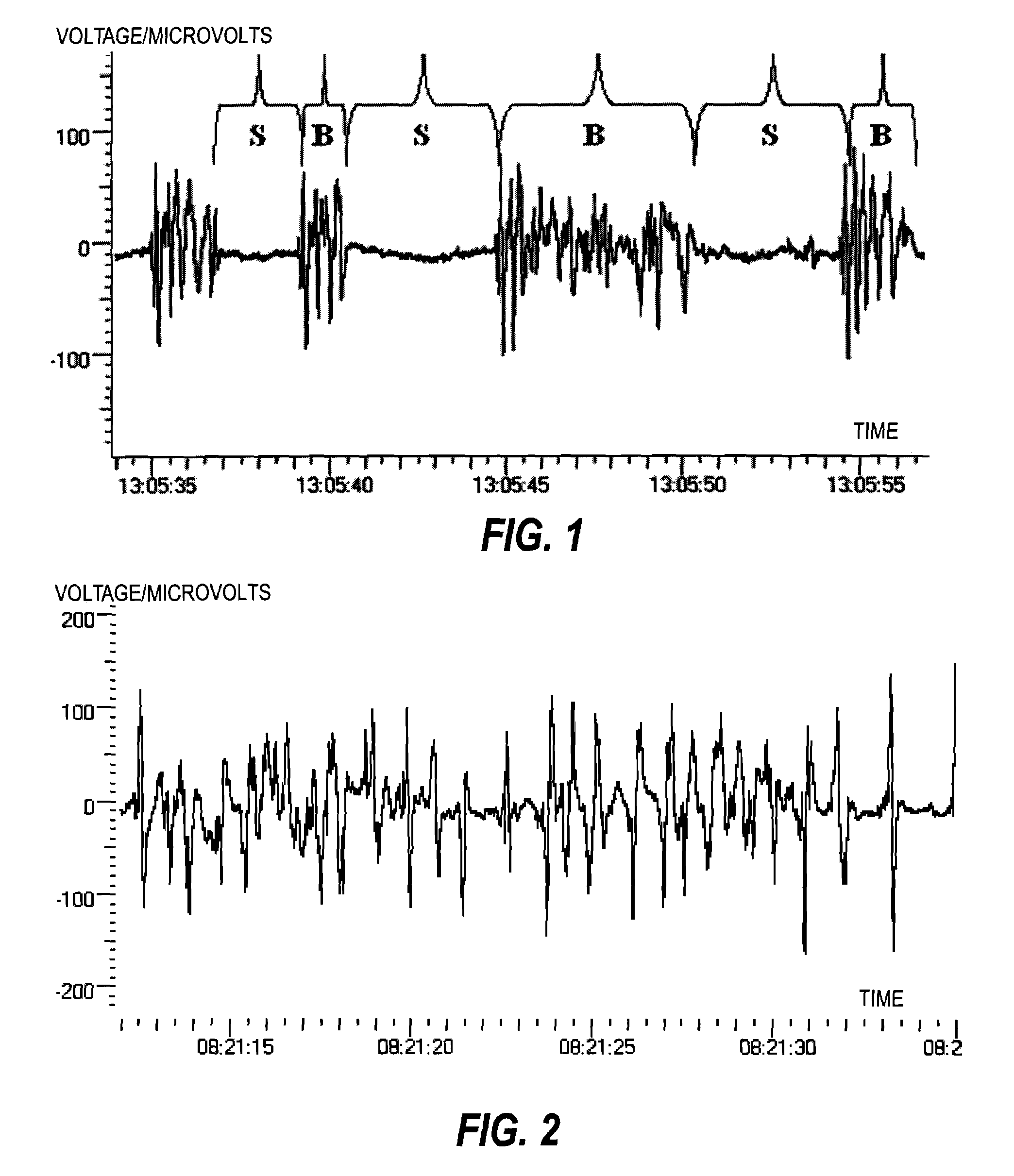Processing of Physiological Signal Data in Patient Monitoring
a physiological signal and patient monitoring technology, applied in the field of physiological signal data processing, can solve the problems of inability to define exact onsets and offsets of burst patterns, difficult accuracy of burst suppression detection algorithms, and disturbed brain functions, etc., to achieve accurate analysis of signals.
- Summary
- Abstract
- Description
- Claims
- Application Information
AI Technical Summary
Benefits of technology
Problems solved by technology
Method used
Image
Examples
Embodiment Construction
[0036]Below, the invention is discussed in more detail in the context of on-line analysis of brain wave signal data.
[0037]FIG. 3 is a flow diagram illustrating one embodiment of the mechanism of the invention. The raw brain wave signal data, which is typically EEG signal data obtained from a patient at step 31, is first processed (step 32) to derive a time series of measurement data from the time series of the brain wave signal data. The measurement data comprises a time series of a desired quantitative characteristic of the brain wave signal data. The quantitative characteristic may be, for example, signal amplitude, signal power, or a wavelet coefficient. New measurement data is obtained as new brain wave signal data is received from the patient, i.e. the measurement data may be obtained substantially in real time.
[0038]At step 33, the validity of the measurement data is checked by examining whether the measurement data fulfills at least one predetermined threshold condition. Only...
PUM
 Login to View More
Login to View More Abstract
Description
Claims
Application Information
 Login to View More
Login to View More - R&D
- Intellectual Property
- Life Sciences
- Materials
- Tech Scout
- Unparalleled Data Quality
- Higher Quality Content
- 60% Fewer Hallucinations
Browse by: Latest US Patents, China's latest patents, Technical Efficacy Thesaurus, Application Domain, Technology Topic, Popular Technical Reports.
© 2025 PatSnap. All rights reserved.Legal|Privacy policy|Modern Slavery Act Transparency Statement|Sitemap|About US| Contact US: help@patsnap.com



